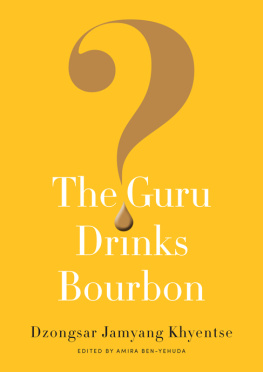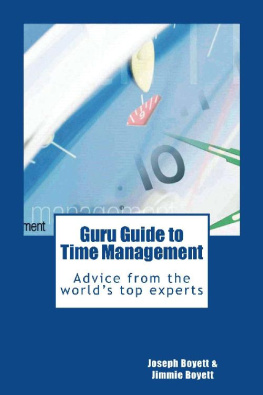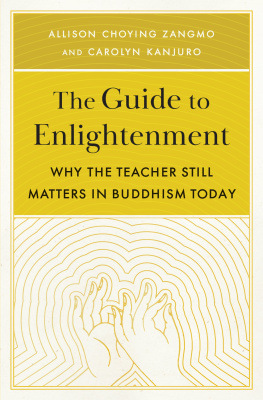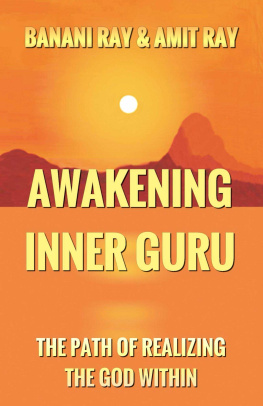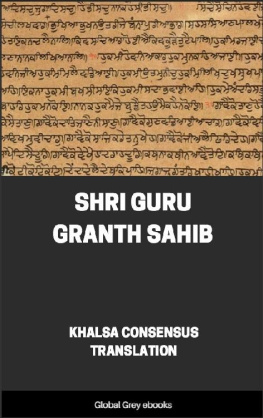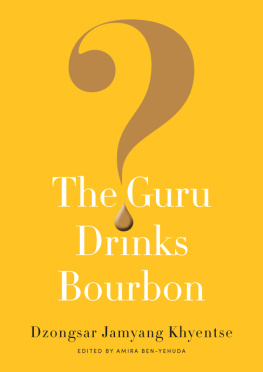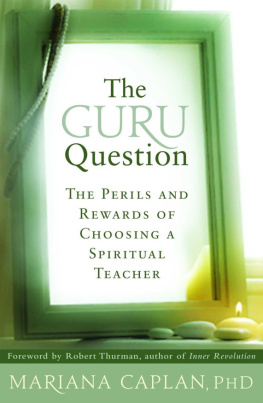Sign up to receive news and special offers from Shambhala Publications.

Or visit us online to sign up at shambhala.com/eshambhala.
The Guru Drinks Bourbon?
Dzongsar Jamyang Khyentse
Edited by Amira Ben-Yehuda

Shambhala
Boulder
2016
Shambhala Publications, Inc.
4720 Walnut Street
Boulder, Colorado 80301
www.shambhala.com
2016 by Dzongsar Jamyang Khyentse
See the for an extension of the copyright page.
All rights reserved. No part of this book may be reproduced in any form or by any means, electronic or mechanical, including photocopying, recording, or by any information storage and retrieval system, without permission in writing from the publisher.
Library of Congress Cataloging-in-Publication Data
Names: Khyentse, Jamyang, 1961 author. | Ben-Yehuda, Amira, editor.
Title: The guru drinks bourbon? / Dzongsar Jamyang Khyentse; edited by Amira Ben-Yehuda.
Description: Boulder: Shambhala, 2016. | Includes index.
Identifiers: LCCN 2016010004 | EISBN 9780834840485 | ISBN 9781611803747 (pbk.: alk. paper)
Subjects: LCSH: Spiritual lifeBuddhism. | Religious lifeBuddhism. | Jigs-med-gling-pa Rang-byung-rdo-rje, 1729 or 17301798.
Classification: LCC BQ7775 .K49 2016 | DDC 294.3/444dc23
LC record available at https://lccn.loc.gov/2016010004
To all the charlatans
without you, the spiritual journey would be just too boring.
Devotion is the Buddha
Devotion is the Dharma
Devotion is the sangha
Devotion is mother
Devotion is father
Devotion is master
Devotion is purifying
Devotion is merit
Devotion is the path
Devotion is the fruit
Devotion is the boat
Devotion is the other shore
Devotion is a wish-fulfilling jewel
Devotion is a spell
Devotion is blind
Devotion is awake
Devotion is direction
Devotion is the means
And devotion is the end
Dzongsar Jamyang Khyentse

Philip Garner
Guru devotion is the head, heart, blood, spine, and breath of the incredible Vajrayana, the path of Buddhist tantra. The Vajrayana is not a safe stroll in the countryside. In fact, safety is probably the least of our concerns. The Vajrayanas way of dealing with ego and the emotions is hazardous. The methods are sometimes even reckless. Therefore, the tantric path is the most adventurous of all Buddhist paths. If this is not an adventure, then there is no adventure. I am assuming if you are reading this book, you are not a wimp and you have chosen to take this risk.

VAJRAYANA IS AN ADVENTURE
HAVE YOU EVER heard of a Tibetan singing bowl? They never existed in Tibet until some cunning inventor who really knew how to package things capitalized on a pro-Tibetan sentiment and came up with this bell. Now you see them everywhere, as if they are Tibetan culture itself. Even the Tibetans in Dharamsala and Kathmandu have adopted these singing bowls as part of their own culture. It is the same with Chinese fortune cookies, which are not Chinese at all. They were invented in America based on a Japanese recipe, and now they are served as if they are the quintessence of Chinese food, even in authentic Chinese restaurants. This is the sort of danger we face, if we are not careful. One day, beautifully packaged, nicely marketed, inauthentic Buddhism will be offered up as the real thing. So scrutiny is important: scrutiny of the teachings, scrutiny of the teacher, and scrutiny of the student. That is the reason I wrote this book.
Its also important to recognize the distinction that exists in Buddhism between theory and practice. Theories are ideas, like all things are born from neither the self nor the other, and practice comprises techniques, things like sitting up straight. Theory and practice often appear to contradict each other. Theory encourages referencelessness and directionlessness, while practice is full of references and directions. But these directions are leading the practitioner to the referenceless point of no direction. The guru principle is a practice. It is a technique, not a theory. In fact, it is the most supreme technique.
While this book may help students who are searching for the guru or those who are trying to maintain a relationship with the guru, its not wise to think that the techniques found here work for everyone. Nor is this the final word on the matter. It is merely my word. The organization of the bookin particular, chapters 24is based on the advice of Jigme Lingpa, but what I have written is based on my own experience with my own teachers and my own so-called students, who are bound to me by their karmic debt. Therefore, subjects such as sex as an offering are included, which might give you a jolt if you happen to think Buddhism is all about peace, nonviolence, vegetarianism, mindfulness, belief in reincarnation, and sitting.
Also, I must point out that the view and technique of the Vajrayana path are so vast and so rich that its impossible for me to explain everything. But its my hope that you will have the endurance to finish reading this book and that it will at least help you develop some familiarity with the world of Vajrayana. I hope you will begin to appreciate that Vajrayana is not just mantra, ritual, deity, guru, mandala, and tantric sex.
This book is for those who are naturally Vajrayana-inclined, like Milarepa and Shantideva, who were not satisfied with ordinary logic and rationality, and who didnt readily accept the known world as it appears. It is for those who dont have time for instruction books, who dont trust maps, and who have the daringness to rely on another human being. It is for those who dont seek a safety net, who would rather have the rug pulled out from under their feet than have some sense of security and direction. It is for people who want to be challenged. This book is for those who started out enthusiastic about practicing tantric Buddhism and then discovered, much to their dismay, that in order to follow the Vajrayana Buddhist path, they must rely on a guru as a guide.
Deciding to follow another human beingnot a god, not a machine, not nature, not a system of governance, not the sun or the moon, but a shower-taking, sleeping, yawning, shitting, moody, bribable beingis either the most stupid thing a person can do, or the most rewarding. It is a gift to have this inclination and the tenacity to follow it. It is a gift to have doubtless confidence. It is a gift to be able to kill doubt with doubt. Not everyone has these gifts.
One of Nyoshul Lungtoks students had these gifts. Once while doing the gurus laundry, he found a shit stain and thought, Oh, the Vajradhara shits. But having received instructions on how a student must regard the teacher as Buddha, he immediately reprimanded himself, How can I think the Vajradhara shits? But then he reprimanded himself again, thinking, Is this just me being a sycophant? Then for a third time he reprimanded himself, coming to the conclusion that being a sycophant is just a concept, a fear. And after all these scoldings, he still followed the guru, not blindly but wholeheartedly.
Once you have started this journey of practicing Vajrayana, many things can happen, and you have to be prepared. Its important to have faith, but its good to also have doubt and use reason. Often faith comes in the aftermath of doubt and doubt comes in the aftermath of faith. And the one that comes second is often much more powerful. In the end we have to abandon both.
Next page
